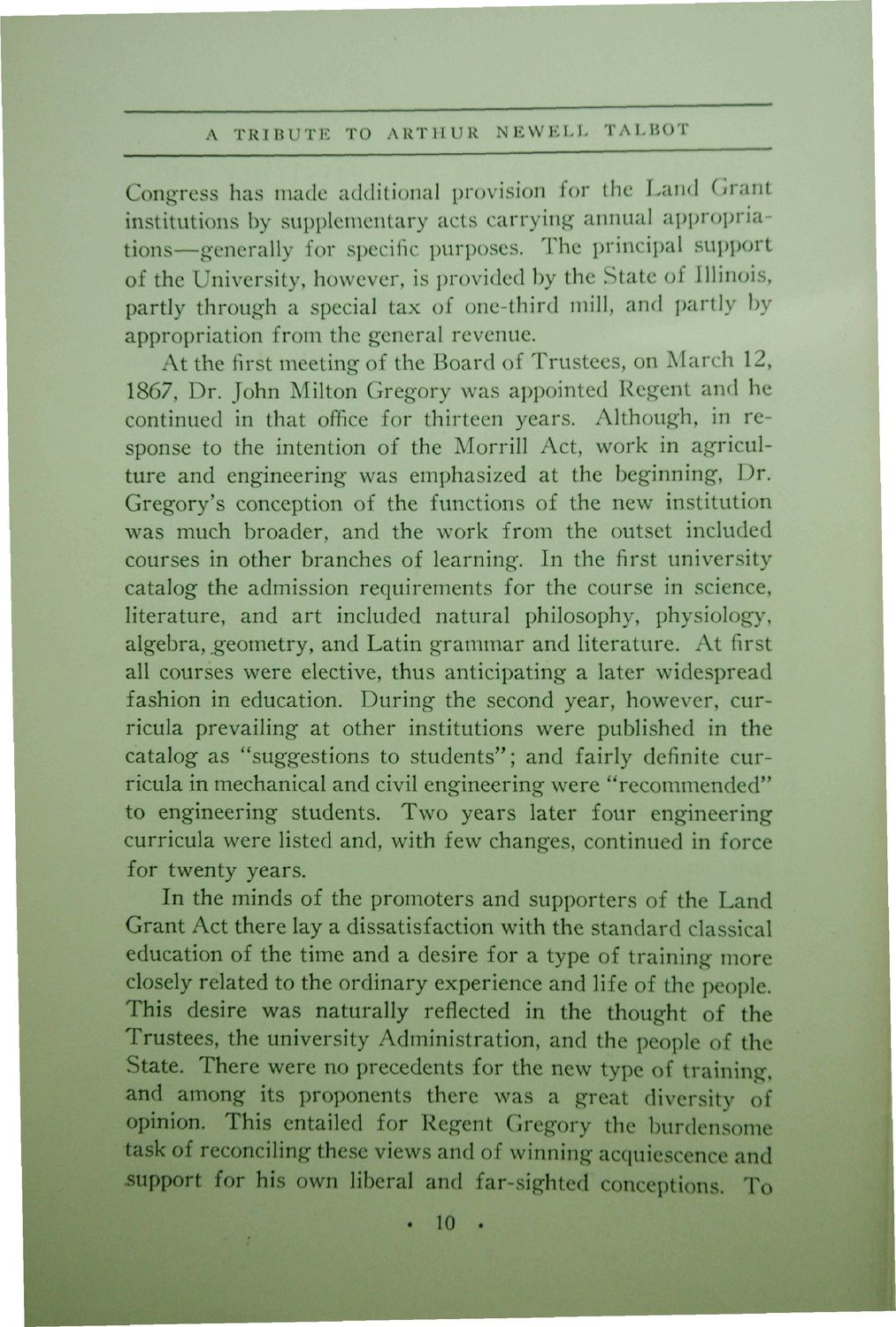| |
| |
Caption: Dedication - Talbot Lab
This is a reduced-resolution page image for fast online browsing.

EXTRACTED TEXT FROM PAGE:
A T R I B U T E TO ARTHUR NEWELL TALBOT Congress has made additional provision for the Land Grant institutions by supplementary acts carrying annual appropriations—generally for specific purposes. The principal support of the University, however, is provided by the State of Illinois, partly through a special tax of one-third mill, and partly by appropriation from the general revenue. At the first meeting of the Board of Trustees, on March 12, 1867, Dr. John Milton Gregory was appointed Regent and he continued in that office for thirteen years. Although, in response to the intention of the Morrill Act, work in agriculture and engineering was emphasized at the beginning, Dr. Gregory's conception of the functions of the new institution was much broader, and the work from the outset included courses in other branches of learning. In the first university catalog the admission requirements for the course in science, literature, and art included natural philosophy, physiology, algebra, .geometry, and Latin grammar and literature. At first all courses were elective, thus anticipating a later widespread fashion in education. During the second year, however, curricula prevailing at other institutions were published in the catalog as "suggestions to students"; and fairly definite curricula in mechanical and civil engineering were "recommended" to engineering students. Two years later four engineering curricula were listed and, with few changes, continued in force for twenty years. In the minds of the promoters and supporters of the Land Grant Act there lay a dissatisfaction with the standard classical education of the time and a desire for a type of training more closely related to the ordinary experience and life of the people. This desire was naturally reflected in the thought of the Trustees, the university Administration, and the people of the State. There were no precedents for the new type of training, and among its proponents there was a great diversity of opinion. This entailed for Regent Gregory the burdensome task of reconciling these views and of winning acquiescence and .support for his own liberal and far-sighted conceptions. To . 10 .
| |